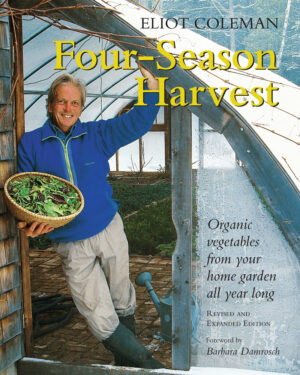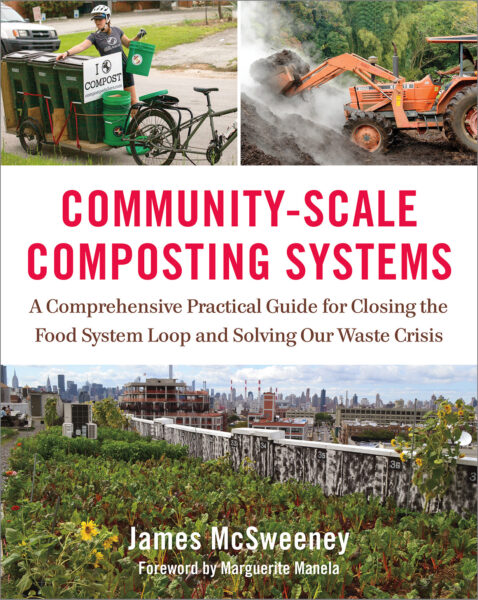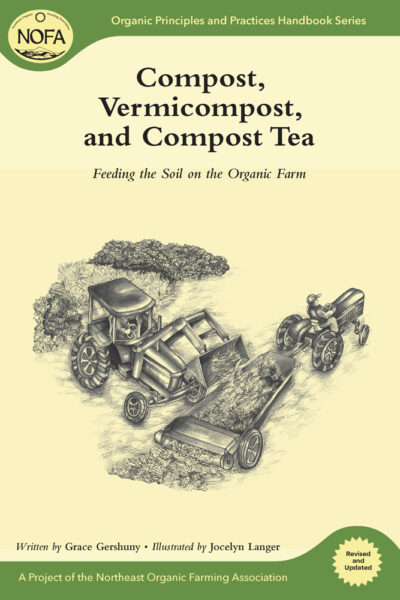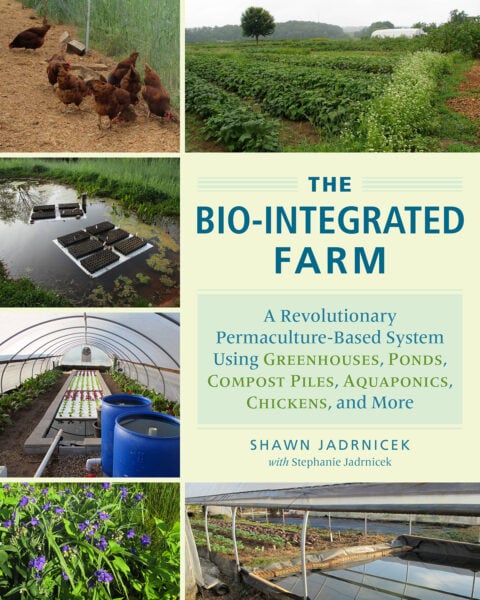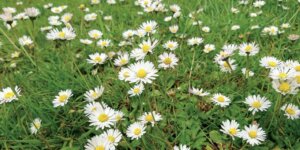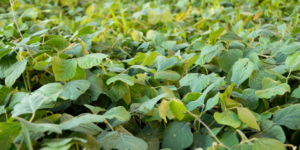A Guide to Great Compost From Eliot Coleman
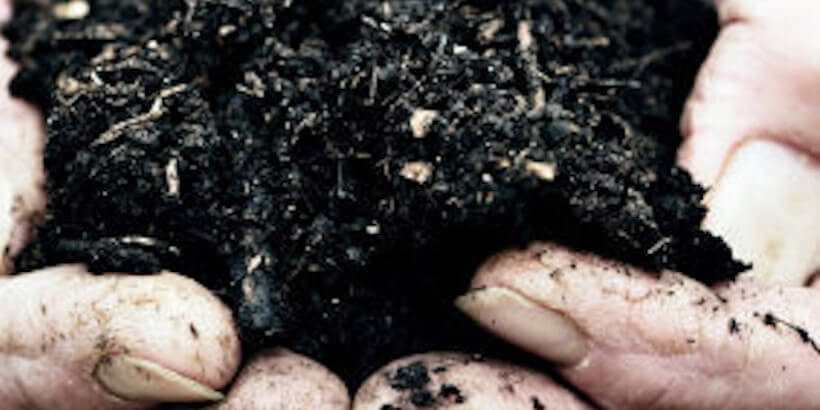
Compost is the key to a lush, abundant garden. Do you know how to turn kitchen scraps and yard waste into fragrant, crumbly, plant food?
If not, your garden is missing out, and you are missing out on one of the most exciting and profound lessons organic gardening has to teach: the simple fact that in the circle of life, all waste is food.
Learn the basics of making compost from four-season gardening guru Eliot Coleman, and open a new door into the joy of growing your own food.
The following is an excerpt from Four-Season Harvest: Organic Vegetables From Your Garden All Year Long by Eliot Coleman. It has been adapted for the Web.
Fertile soil is the key to growing garden vegetables
So often, the obvious solution is right at our fingertips, but it looks so simple that we fail to notice. Generations of gardeners have consistently come up with the same chain of logic: a fertile soil is the key to growing garden vegetables; compost is the key to a fertile soil. The first step in the four-season harvest is learning to make good compost. It’s not difficult. Compost wants to happen.
Compost is the end result of the decomposition of organic matter. It is basically a brown to black crumbly material that looks like a rich chocolate fudge cake. Compost is produced by managing the breakdown of organic material in a pile called a compost heap. Compost enhances soil fertility because fertile soil and compost share a prolific population of organisms whose food is decaying organic matter. The life processes of these organisms help make nutrients from the organic matter and the minerals in the soil available to growing plants.
A fertile soil is filled with life. Compost is the life preserver.
Gardeners are not alone in their reverence for compost. Poets have found it equally inspiring. Andrew Hudgins, in a poem titled “Compost: An Ode,” refers to the role of the compost heap in uniting life and death: “a leisurely collapsing of the thing into its possibilities.” John Updike reminds us that since “all process is reprocessing,” the forest can consume its fallen trees and “the woodchuck corpse vanish to leave behind a poem.” Walt Whitman marvels at how composting allows the earth to grow “such sweet things out of such corruptions.”
Good compost, like any other carefully crafted product, is not an accident. It comes about through a process involving microorganisms, organic matter, air, moisture, and time that can be orchestrated in anyone’s backyard. No machinery is necessary, and no moving parts need repair. All you need to do is heap up the ingredients as specified in the next section and let nature’s decomposers do the work.
Compost Ingredients
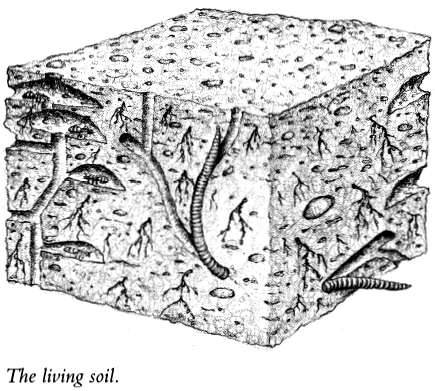
The ingredients for the heap are the organic waste materials produced in most yards, gardens, and kitchens. That is what is so miraculous and so compelling about compost. If you pile up organic waste products they eventually decompose into compost. There is nothing to buy, nothing to be delivered, nothing exotic. This acknowledged “best” garden fertilizer is so in harmony with the cyclical systems of the natural world that it is made for free in your back yard from naturally available waste products.
The more eclectic the list of ingredients, the better the compost. That is only logical. The plant wastes that go into your compost heap were once plants that grew because they were able to incorporate the nutrients they needed. So don’t pass up any weeds, shrub trimmings, cow pies, or odd leaves you can find. If you mix together a broad range of plants with different mineral makeups, the resulting compost will cover the nutrient spectrum.
I suggest dividing your compost ingredients into two categories based on their age and composition. The two categories are called green and brown.
The green ingredients include mostly young, moist, and fresh materials. They are the most active decomposers. Examples are kitchen wastes such as apple peels, leftovers, carrot tops, and bread, and garden wastes such as grass clippings, weeds, fresh pea vines, outer cabbage leaves, and dead chipmunks. The average house and yard produce wastes such as these in surprising quantities. National solid waste data indicate that approximately 25 percent of household trash consists of food scraps and yard waste.
The brown ingredients are usually older and drier than the green ones, and they decompose more slowly. Examples are dried grass stems, old cornstalks, dried pea and bean vines, reeds, and old hay. The brown category is usually not well represented in the average backyard. To start, you may want to purchase straw, the best brown ingredient of all. Straw is the stem that holds up the amber waves of grain in crops such as wheat, oats, barley, and rye. After the heads containing the grains are harvested, the straw is baled as a byproduct. You can purchase straw a few bales at a time from feed stores, riding stables, or a good garden supply store.
The advantage of straw as the brown ingredient is that it will almost guarantee the success of your composting efforts. When home gardeners encounter smelly failures in their attempts to make good compost, the fault usually lies with the lack of a proper brown ingredient. In years to come, when you become an expert at composting, you may choose to expand your repertoire beyond this beginner’s technique, but it is the most reliable method for beginners or experts.
Building the Compost Heap
Pick a site near the garden so the finished compost will be close at hand. Whenever possible, place the heap under the branches of a deciduous tree so there will be shade in hot weather and sunlight to thaw the heap in spring. A site near the kitchen makes it convenient to add kitchen scraps. Access to a hose is handy for those times when the heap needs extra moisture. If the site is uphill from the garden, the heavy work of wheelbarrowing loads of compost will have gravity on its side.
Build the compost heap by alternating layers of brown ingredients with layers of green ones. Begin with a layer of straw about 3 inches deep, then add 1 to 6 inches of green ingredients, another 3 inches of straw, and then more green ingredients. The thickness of the green layer depends on the nature of the materials. Loose, open material such as green bean vines or tomato stems can be applied in a thicker (6-inch) layer, while denser material that might mat together, such as kitchen scraps or grass clippings, should be layered thinly (1 to 2 inches). These thicknesses are a place for you to start, but you will learn to modify them as conditions require.
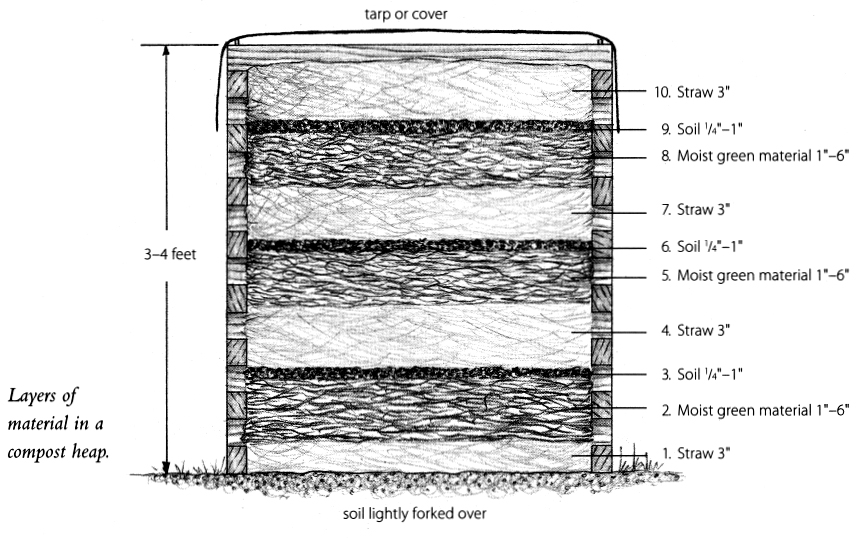
Sprinkle a thin covering of soil on top of each green layer. Make the soil 1/2 inch deep or so depending on what type of green material is available. If you have just added a layer of weeds with soil on their roots, you can skip the soil covering for that layer. The addition of soil to the compost heap has both a physical and a microbiological effect: physical because certain soil constituents (clay particles and minerals) have been shown to enhance the decomposition of organic matter; microbiological because soil contains millions of microorganisms, which are needed to break down the organic material in the heap. These bacteria, fungi, and other organisms multiply in the warm, moist conditions as decomposition is initiated. If your garden is very sandy or gravelly, you might want to find some clay to add to the heap as the soil layer. As an additional benefit, the clay will improve the balance of soil particle sizes in your garden.
Recommended Reads
Recent Articles
Want to see your crops thrive this upcoming growing season? The key is in soil fertility and health. Spend time maintaining your soil’s health to guarantee bigger and better crops come harvest time! The following is an excerpt from No-Till Intensive Vegetable Culture by Bryan O’Hara. It has been adapted for the web. What Is Soil Fertility?…
Read MoreMany know the effects of catnip on our feline friends, but few realize that catnip has medicinal effects for humans. From stomach aches to reducing fevers, catnip is a versatile herb with many benefits. The next time you grow this plant for your cat you may end up taking a few cuttings for yourself! The…
Read MoreIt’s time to take control of your seeds and become a plant breeder! Saving your seed allows you to grow and best traditional & regional varieties, and develop more of your own. The following excerpt is from Breed Your Own Vegetable Varieties by Carol Deppe. It has been adapted for the web. Becoming A Plant…
Read MoreRewilding is one of the best things you can do for the biodiversity of your farm or garden. By no longer mowing your lawn, flowers will start to grow, creating a meadow and a habitat for creatures that often get forgotten. The following is an excerpt from The Healthy Vegetable Garden by Sally Morgan. It…
Read MoreTrying to figure out how to manage weeds in your garden beds? Use cover crops and living mulches for weed suppression while your garden flourishes! The following is an excerpt from The Ecological Farm by Helen Atthowe. It has been adapted for the web. Suppressing Weeds With Cover Crops: Getting Started Cover crops suppress weeds…
Read More

